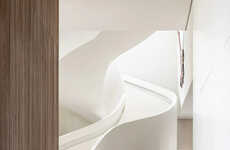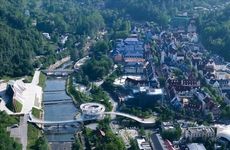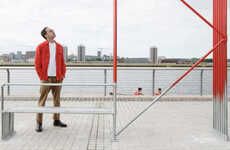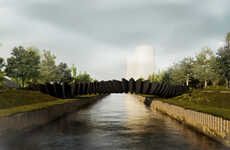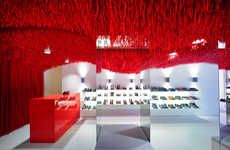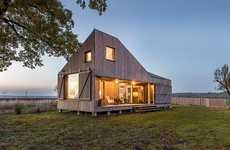
This Pedestrian Hub in Brazil is Also a Form of Street Architecture
Christopher Magsambol — October 8, 2015 — Art & Design
The bustling streets of Salvador, Brazil welcomed a interesting pedestrianized walkway that doubles as a form of street architecture. The area is a commonly used route that is close to a busy bus terminal and vibrant street market.
The unique walkway has a sloped shape and forced architects to use their creativity when creating both a practical and visually appealing staircase. The natural incline of land led the team to create an uneven set of stairs that are much shorter than normal. This was done to ensure views of the Barroquinha Church were left obstructed. Portuguese mosaic paving and solid granite were also used to execute this look. Architects wanted the space to not only be an efficient pathway for pedestrians, but also a piece of street architecture that blends modernism and tradition.
The unique walkway has a sloped shape and forced architects to use their creativity when creating both a practical and visually appealing staircase. The natural incline of land led the team to create an uneven set of stairs that are much shorter than normal. This was done to ensure views of the Barroquinha Church were left obstructed. Portuguese mosaic paving and solid granite were also used to execute this look. Architects wanted the space to not only be an efficient pathway for pedestrians, but also a piece of street architecture that blends modernism and tradition.
Trend Themes
1. Pedestrian-focused Street Architecture - Innovative street design that prioritizes pedestrian experience over vehicular traffic, incorporating elements of modernism and traditional architecture.
2. Sloped and Asymmetrical Staircase Design - Architects are experimenting with functional, visually appealing, and unconventional staircase designs, often using natural land inclinations as inspiration.
3. Using Mosaic and Granite in Public Space Design - Urban designers are incorporating decorative elements like mosaic and granite in public space design, revitalizing city architecture with unique textures and colors.
Industry Implications
1. Urban Planning and Development - Professionals in this field can use innovative pedestrian-focused street architecture to create vibrant city spaces that balance functionality and visual appeal.
2. Architecture and Interior Design - Architects and designers can find new business opportunities in creating visually stunning, practical, and unique staircase designs.
3. Public Art and Design - Artists and designers can explore the use of decorative elements like mosaic and granite in public art and design to create striking and aesthetically pleasing city landscapes.
1.1
Score
Popularity
Activity
Freshness





